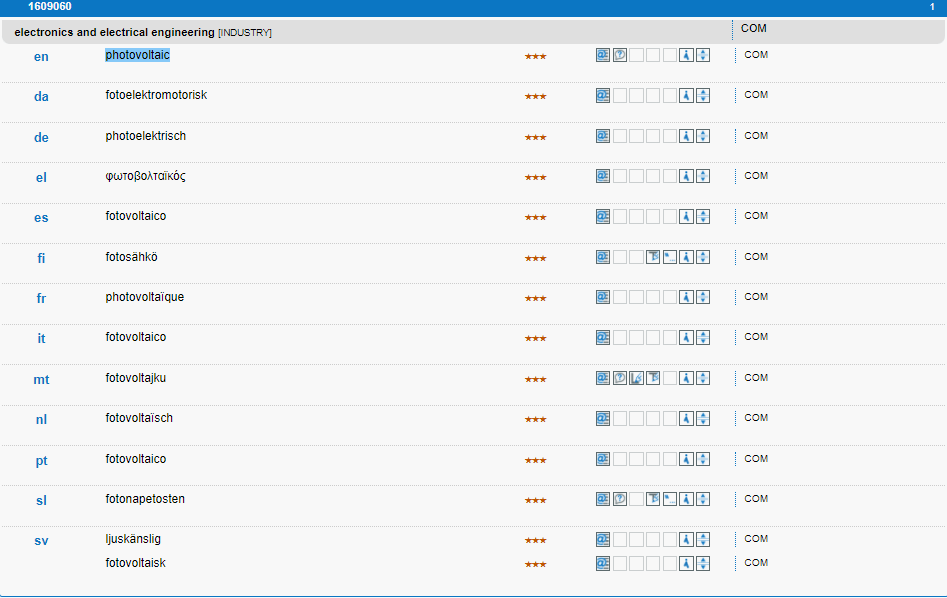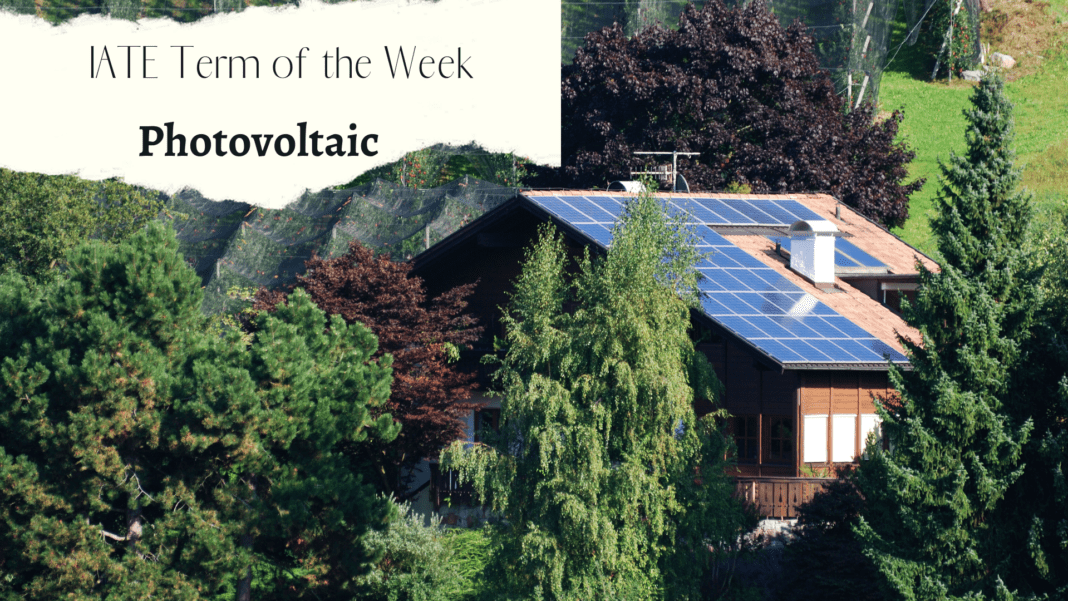What is photovoltaics?
The term “photovoltaic” comes from the Greek φῶς (phōs) meaning “light”, and from “volt”, the unit of electromotive force, the volt. Photovoltaics (PV) as an effect, refers to the conversion of light (photons) into electricity (voltage). This process takes places in PV devices, normally made of semiconductor material – photons strike and ionize semiconductor material on the solar panel, causing outer electrons to break free of their atomic bonds. Due to the semiconductor structure, the electrons are forced in one direction creating a flow of electrical current.
PV devices nowadays are commercially utilised with the aim of producing affordable sustainable energy. They can be used to power anything from small electronics such as calculators and road signs up to homes and large commercial businesses. PV solar power is regarded as the reliable future energy source. After hydro and wind powers, PV is the third renewable energy source in terms of global capacity.

Photovoltaic’s development and its types
The PV effect was observed as early as 1839 by Alexandre Edmund Becquerel in France. Due to his pioneering work, the photovoltaic effect has also been known as the “Becquerel effect”. Then in 1954, Bell Labs in the U.S. introduced the first solar PV device that produced a usable amount of electricity.
The energy crisis of the 1970s stimulated people to use solar cells to produce electricity in homes and businesses, but prohibitive prices made large-scale applications impractical. In the last decade, however, the cost of PV has dropped dramatically; moreover, industry developments and research in the last years made PV devices more affordable.
Silicon Solar Cells
The vast majority of today’s solar cells are made from silicon and offer both reasonable prices and good efficiency. These cells are usually assembled into larger modules that can be installed on the roofs of residential or commercial buildings or deployed on ground-mounted racks to create huge, utility-scale systems.
Thin-Film Solar Cells
They are made from very thin layers of semiconductor material. The thickness of these cell layers is only a few micrometers. This feature makes them ideal for portable applications—such as in a soldier’s backpack—or for use in other products like windows that generate electricity from the sun. This type is a fast-growing but small part of the commercial solar market.
III-V Solar Cells
This type of photovoltaic technology is named after the elements that compose them. These solar cells are generally much more expensive to manufacture than other technologies. But they convert sunlight into electricity at much higher efficiencies. Because of this, these solar cells are often used on satellites, unmanned aerial vehicles, and other applications that require a high ratio of power-to-weight.
The advantages and disadvantages of PV panels
Advantages
- PV panels are clean and silent. During electricity generation with PV panels there is no harmful greenhouse gas emissions and noise at all;
- Residential solar panels are easy to install on rooftops or on the ground without interference to residential lifestyle.
Disadvantages
- PV panels’ efficiency levels are relatively low (between 14%-25%) compared to the efficiency levels of other renewable energy systems.
- PV panels are not continuously available for converting light into electricity as e.g. during night-time and during cloudy or rainy weather. Thus, PV cells will probably be incapable of meeting an electric power system’s demand.
Photovoltaic in 2021’s EU and global markets
Photovoltaic has great potential in the EU and on the global market. Demand for solar power in the European Union has grown impressively in 2021. The 27 member states of the European Union saw around 25.9 GW of new solar PV capacity connected to their grids in 2021, an increase of 34% compared to the 19.3 GW installed the year before. Germany represented Europe’s major solar market in 2021 with 5.3 GW of newly installed capacity, followed by Spain (3.8 GW), the Netherlands (3.3 GW), Poland (3.2 GW) and France (2.5 GW). The Netherlands has overtaken Germany for installations per capita, reaching 765 W/capita, 42% up compared to 2020.
With a 14% annual growth rate and an all-time high of 54.9 GW of new solar PV capacity, China kept its market leadership in 2021, adding twice as much solar power capacity than the second-largest market, the United States, followed by India, Japan and Australia. Worth mentioning is also the exciting development in Latin America – a 44% increase in 2021; the future of solar energy in the region is extraordinarily promising.
References:
EU Market Outlook for Solar Power 2021-2025 – SolarPower Europe. 2022. EU Market Outlook for Solar Power 2021-2025 – SolarPower Europe. [ONLINE] Available at: https://www.solarpowereurope.org/insights/market-outlooks/market-outlook#downloadForm. [Accessed 16 May 2022].
Global Market Outlook For Solar Power 2022-2026 – SolarPower Europe. 2022. Global Market Outlook For Solar Power 2022-2026 – SolarPower Europe. [ONLINE] Available at: https://www.solarpowereurope.org/insights/market-outlooks/global-market-outlook-for-solar-power-2022. [Accessed 16 May 2022].
National Renewable Energy Laboratory. 2022. Solar Photovoltaic Technology Basics. [ONLINE] Available at: https://www.nrel.gov/research/re-photovoltaics.html. [Accessed 16 May 2022].
Photovoltaics and electricity – U.S. Energy Information Administration (EIA). 2022. Photovoltaics and electricity – U.S. Energy Information Administration (EIA). [ONLINE] Available at: https://www.eia.gov/energyexplained/solar/photovoltaics-and-electricity.php. [Accessed 16 May 2022].
SEIA. 2022. Photovoltaics | SEIA. [ONLINE] Available at: https://www.seia.org/initiatives/photovoltaics. [Accessed 16 May 2022].
Written by Quankun Ding
Quankun is enrolled as a Master’s student of Linguistics and Applied Linguistics at Fudan University in Shanghai. His academic interest lies in the influence of language on human and society. He likes learning different languages and he is also very interested in the Communication work of the Terminology Coordination Unit at the European Parliament.

